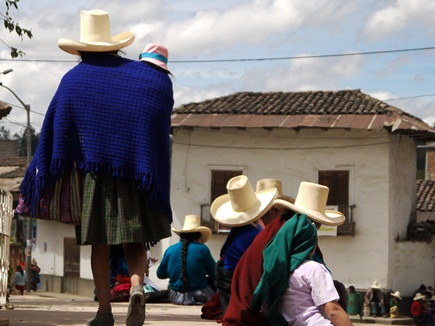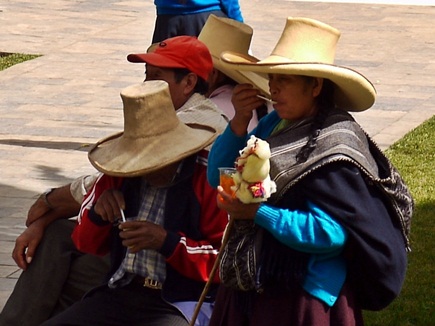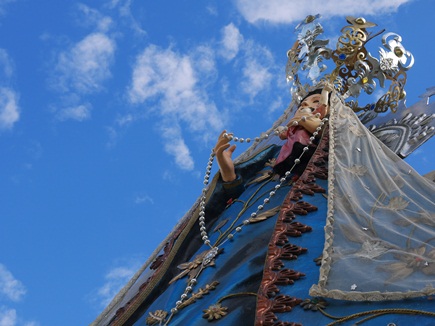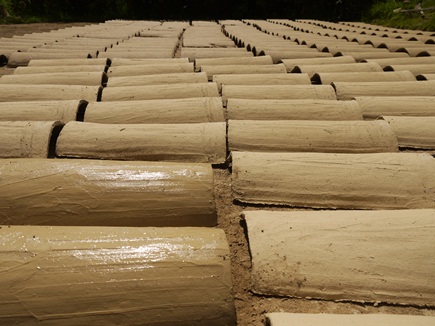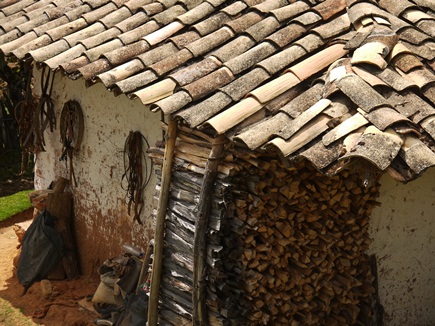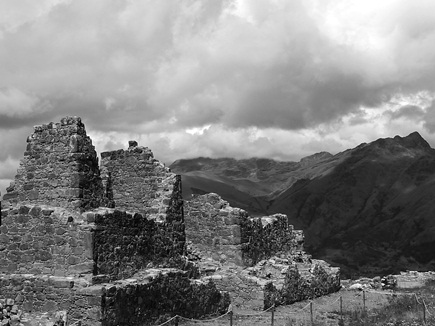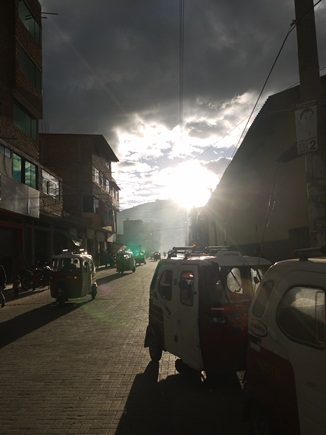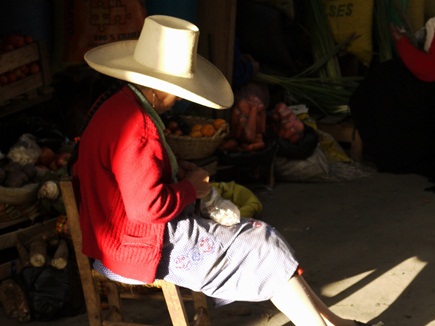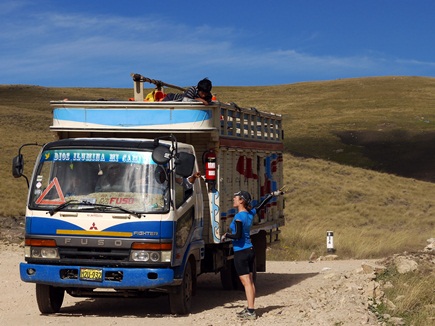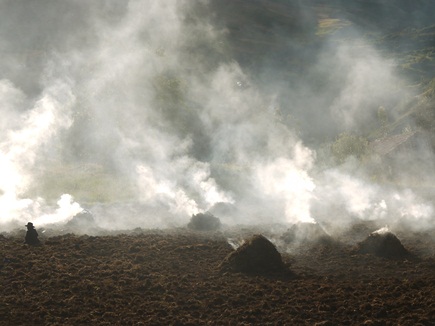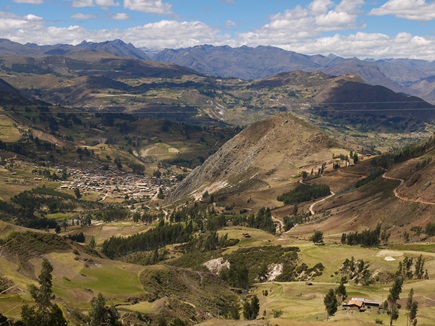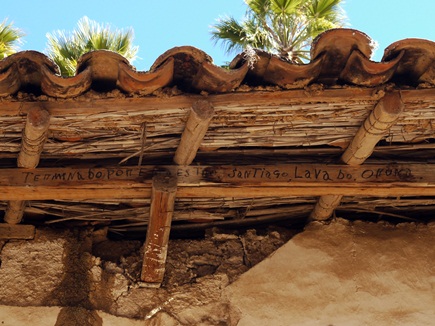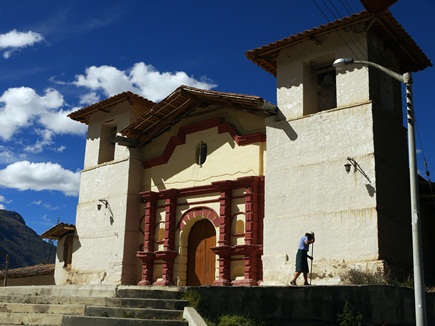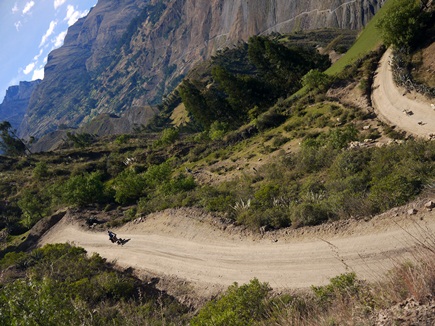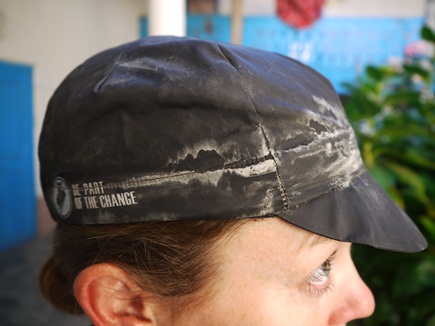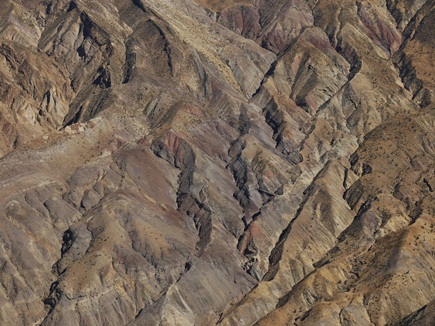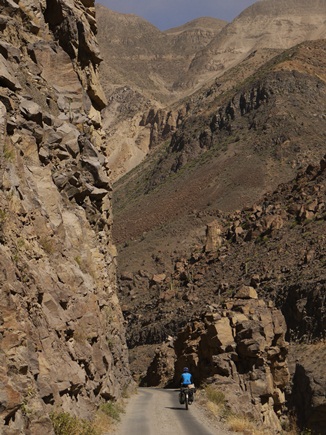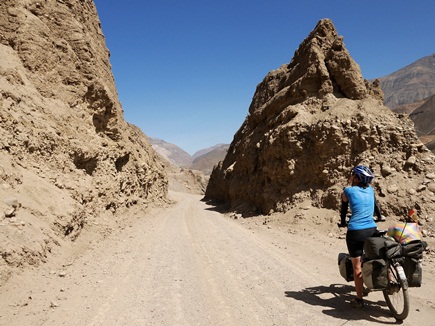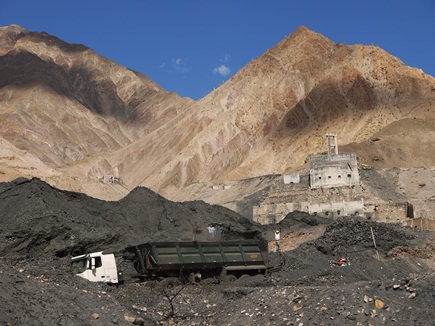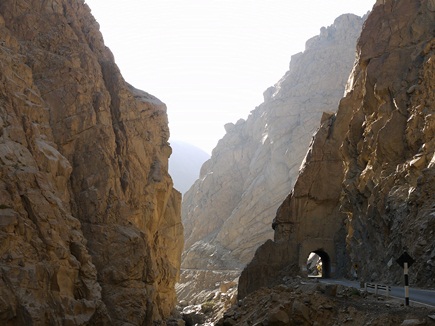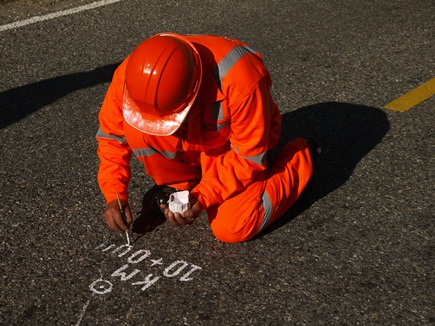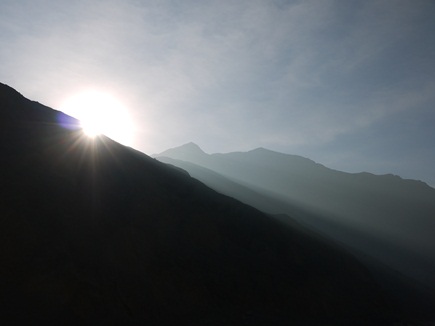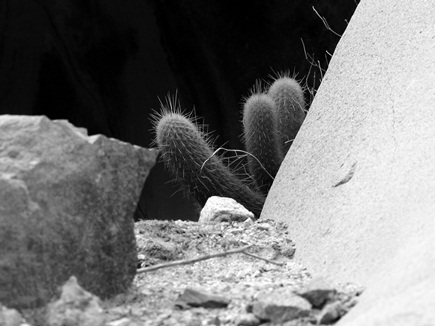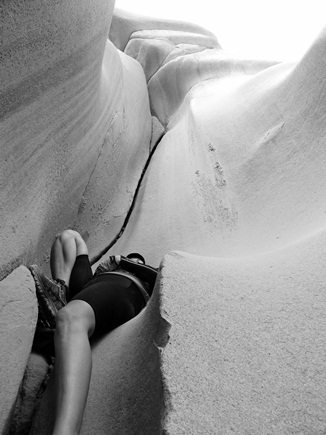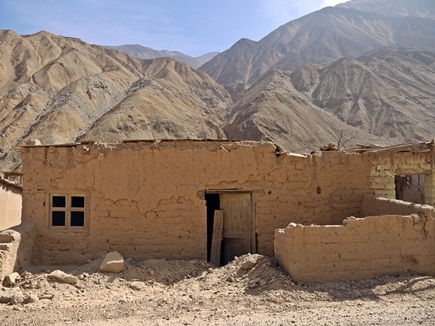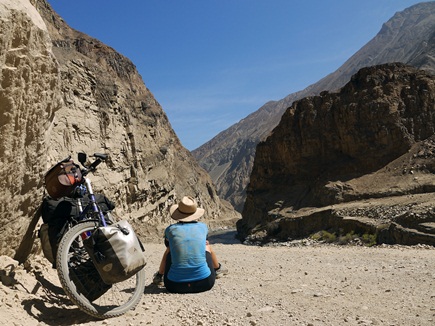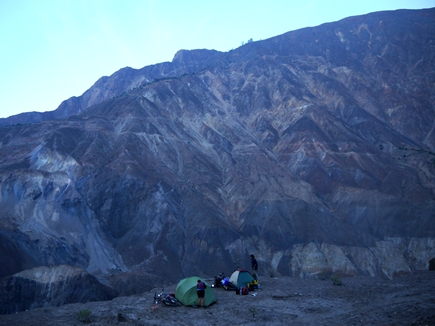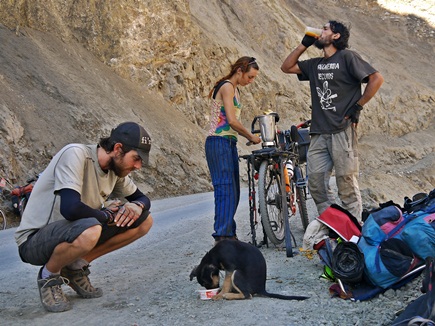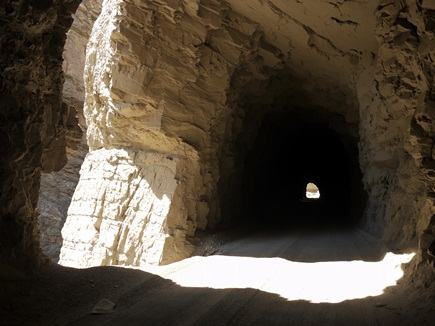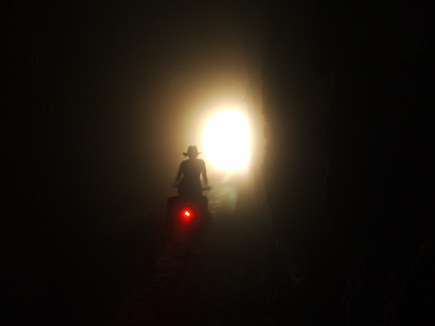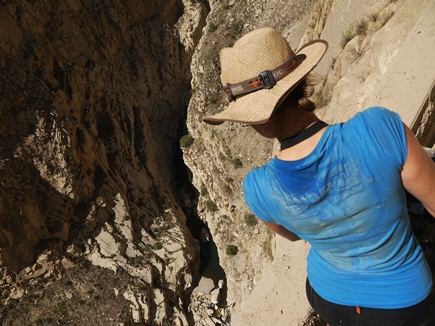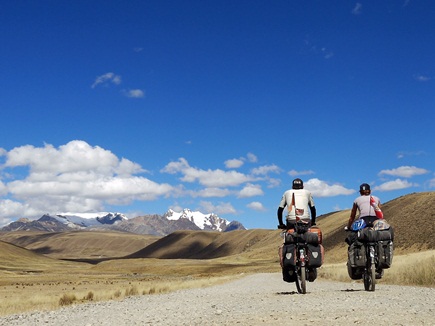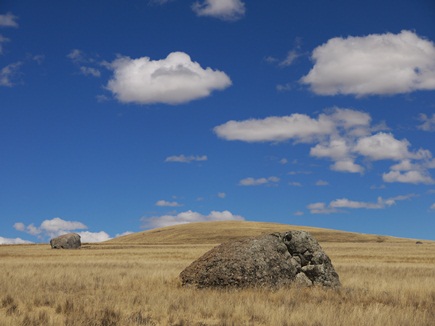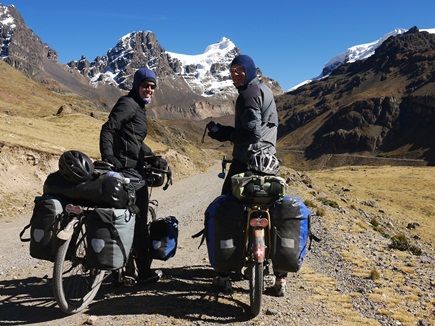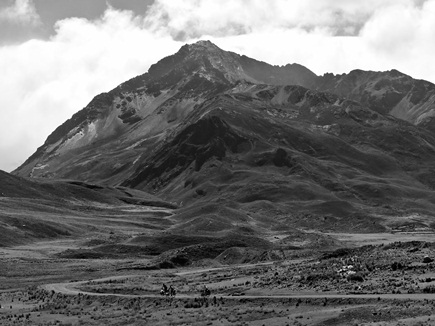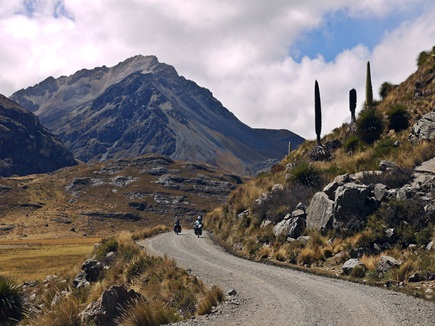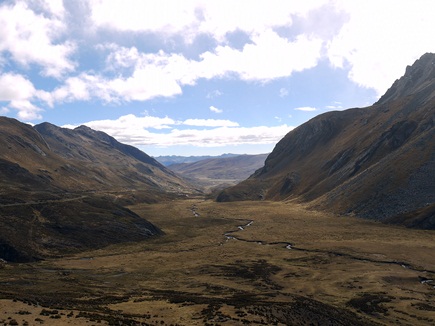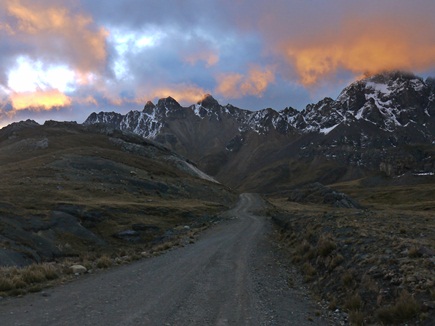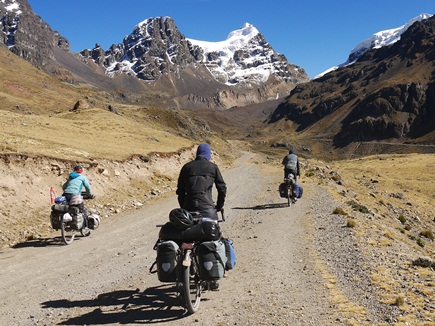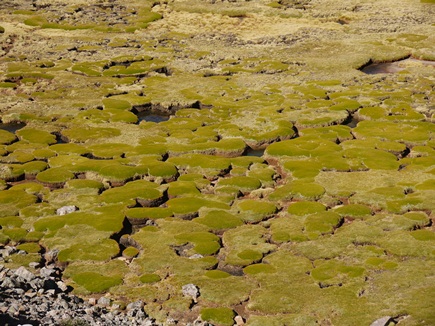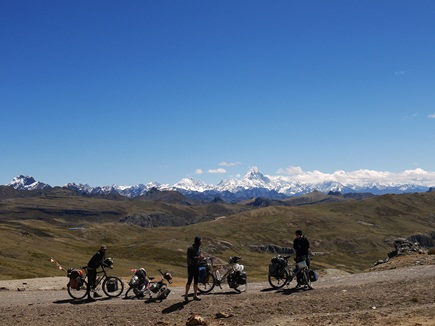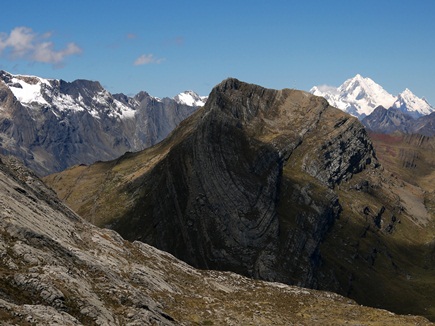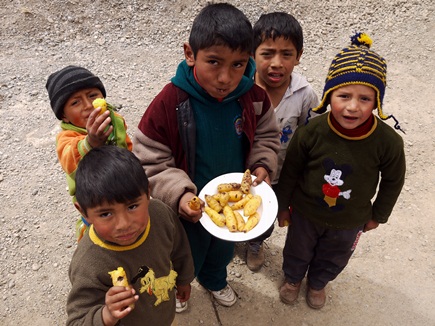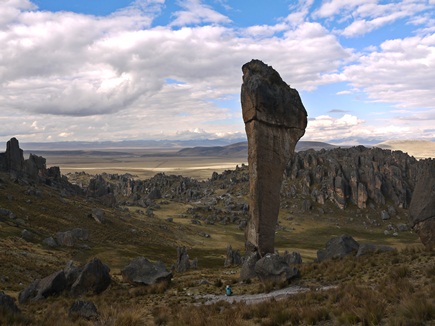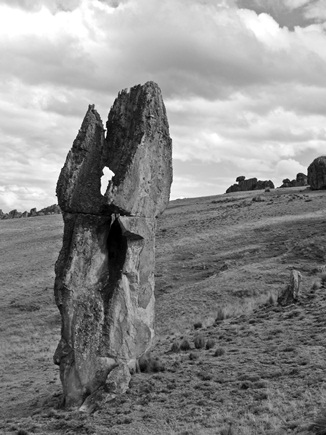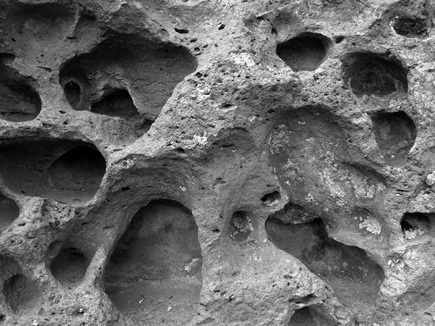Two wheels; different ways
July 1st, 2013
Having been cycle-touring for a while now, I realise that although I find every day a challenge in one way or another, it barely scratches the surface in comparison to the feats of other cyclists.
For example: the couple who completed the 2500 mile Great Divide Mountain Bike route in the US on a unicycle; the family who left home for a true Latin American adventure together; the Spaniard who has been riding his bike around the world for the last seven and a half years; the Australian who always, always finds the back road alternative no matter how hard; the French couple who do it by tandem, or the Canary Islanders who gave up backpacking, built their own touring bikes out of recycled parts, adopted a puppy, strapped her to the front of the bike and set off for the mountains.
We have met all of the above cyclists on our trip (except for the unicyclists who I would just love to share a beer with) and more, who continue to inspire us, challenge us and show us that there are so many different facets to bicycle touring.
For my part, after two years I simply continue to enjoy the ride, to be amazed at new landscapes, continue to love meeting new people – cyclists and locals. If we can follow just some of the tyre tracks of those who inspire us, and absorb some of that incredible energy, we’ll have enough steam to get us to Patagonia.
The latest leg of our trip was not lacking in inspirational landscapes or people and as the road brought us nearer to the mythical Cordillera Blanca, the thrill of the ride never waned.
Sarah
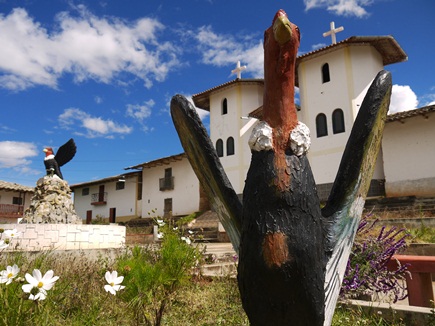
By lunchtime, we are admiring the condor statues at Condormarca – unfortunately none of the real birds make an appearance.
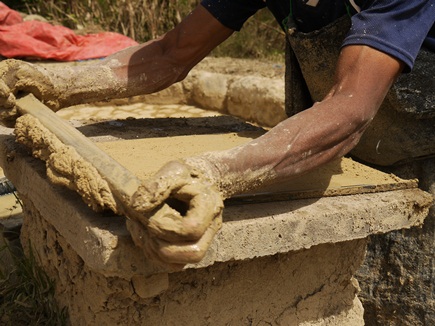
Into the rural fields outside of Cajabama and James gets a whirlwind intro to tile making; moulded out of earth, sand and water…
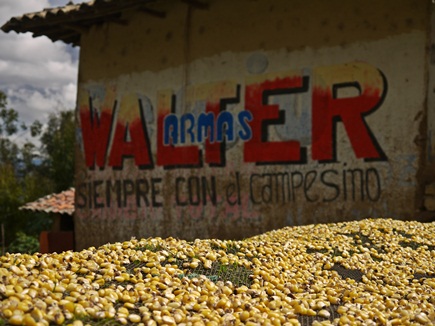
A classic Latin American view as we pass through the regrettably named Shitabamba: maize kernels drying on sheets in the sun and political campaigning painted directly onto the walls of houses.
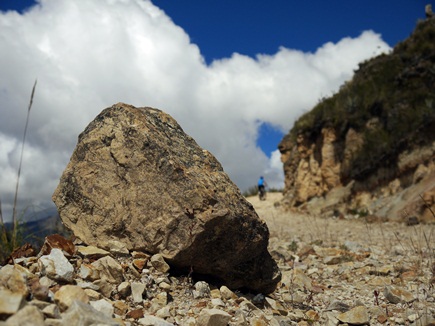
We unload the bikes at Huamachuco and make the 10km rocky climb up to the pre-Inca ruins at Marcahuamachuco…
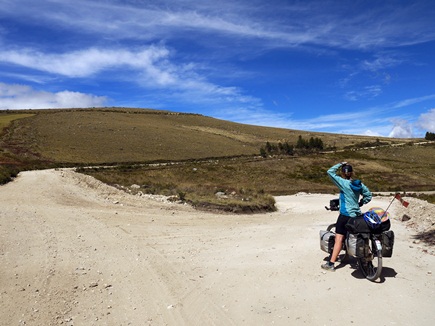
More than once on this section we are scratching our heads about which of the identical unsigned tracks to take…
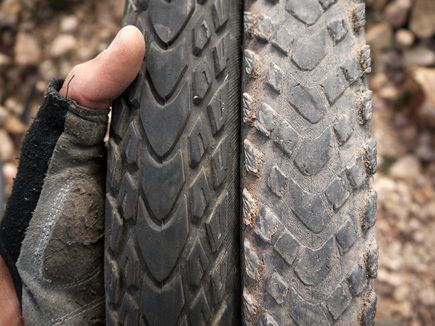
After 21,000km another rocky descent is one too many for my front tyre. Not bad for two years of rough riding. So we swap a Marathon Extreme (now discontinued) for a Marathon Mondial – initial impressions are that it doesn’t seem to offer as much grip, but we’ll see how it goes.
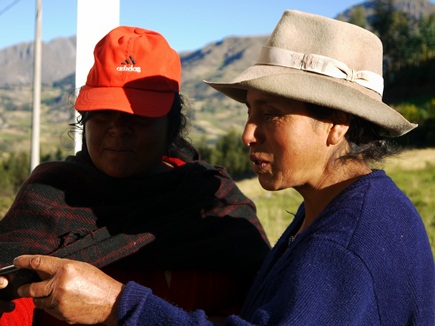
…brings us to the dairy at La Victoria near Cachicadán. A beautiful camp spot and chatting with lively local dairyherder Marléne (on the right) is the perfect way to end the day.
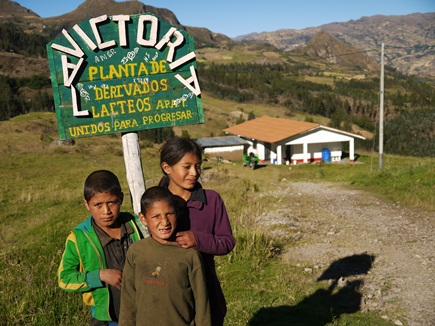
The following morning, we can’t leave without buying some of the produce; the kids wave us on our way…
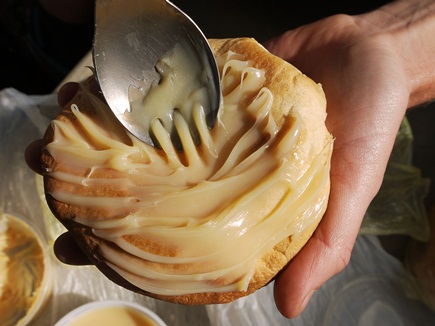
…but it’s not long before I insist on stopping to sample some of our purchases: manjar, spreadable fudge, on fresh crusty bread. Yum.
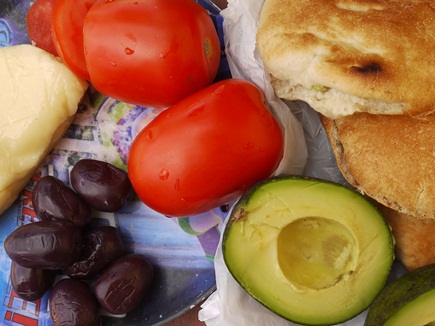
Lunch feels practically European. Unexpectedly, we have been able to get hold of Swiss-style cheese, meaty olives, juicy tomatoes, creamy avocados and fresh bread. More yum.
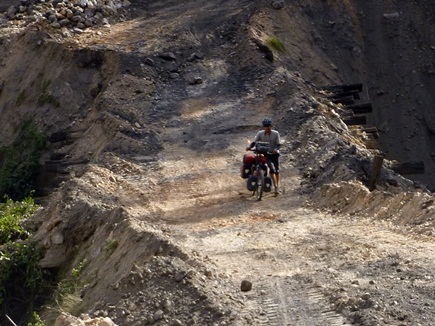
The afternoon delivers a nasty punch with a challenging river crossing on a bridge that looks about four hundred years old, a scramble over rocky roadworks and then a gruelling climb up to Tulpo.
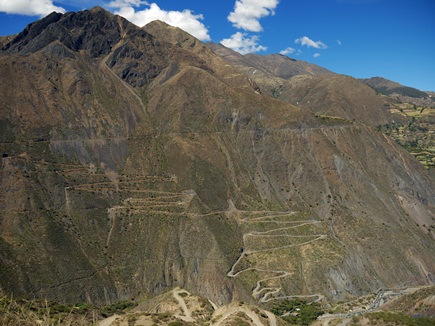
…only to be confronted by the afternoon’s challenge. Twenty four hairpin bends and a 20km climb to Pallasca…
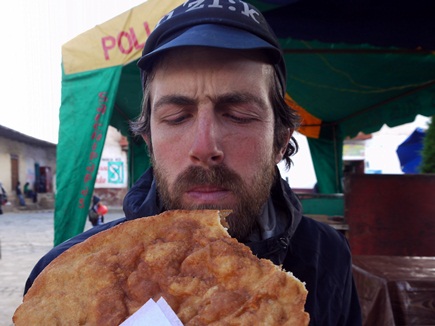
…where, when we arrive, the most pressing job as always, is to seek out calories. Sometimes we hit the jackpot – this fritter is the perfect quick fix…
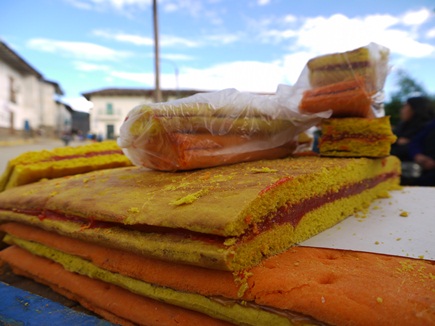
…and sometimes there are bitter failures; what appears to be tasty looking cake is filled with a foul excuse for jam, rendering it nearly inedible.
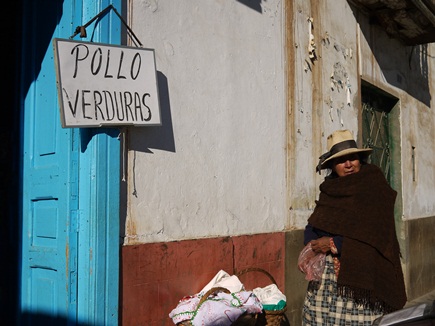
We make sure to visit the bread lady before leaving Pallasca not knowing where we’ll end the day – but certain that…
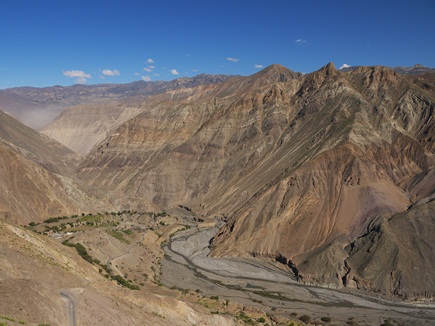
…there’s a big downhill in store. 25km of descending into the Rio Chuquicara gorge and then it’s all flat riding or downhill.
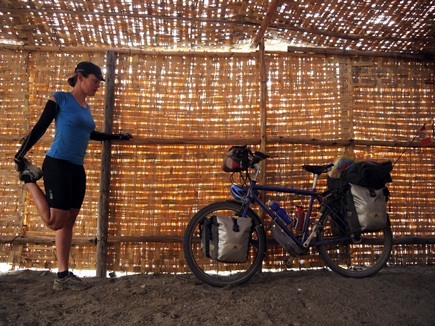
Sure enough, exactly 10km later we are sheltering from the wind in a palapa at Chuquicara. A morning stretch is needed before we set off towards Caraz through the Cañon del Pato.
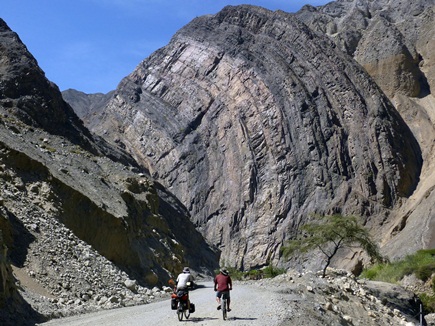
…when James is joined by a companion on a bike. Segundo, a local security guard who patrols this stretch of road on his two wheels, tells us there are two other touring cyclists just ahead.
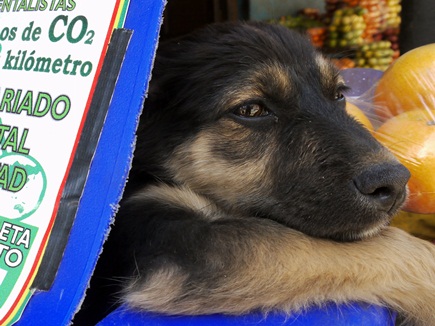
They are Spaniards Kalima and Charco, riding up into the mountains on handbuilt bikes from the coast, with their new puppy “Cicla” (rescued from a rubbish dump in Trujillo) stowed away in a box on the handlebars.

…before they teach us a thing or two about taking roadside breaks the next day. Charco has a blender attachment on his bike and they soon knock up four papaya smoothies…
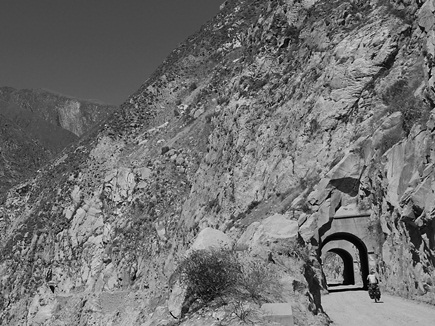
The final stretch to Caraz is through the famed Cañon del Pato, a series of thirty six tunnels cut into the rock where the passage between two mountain ranges is more than a tight squeeze…
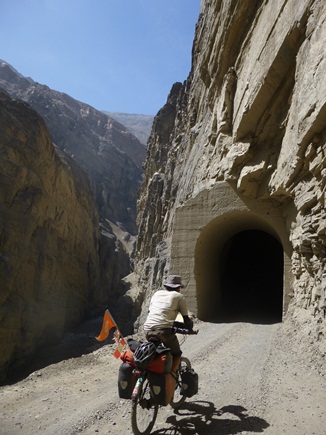
Breathing in for the cars and buses which come screeching through is not an option; stopping is mandatory.
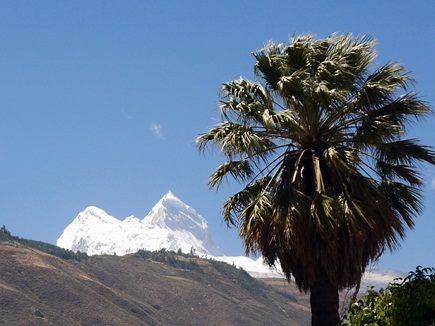
Last stop on this leg: Caraz and the gateway to the Cordillera Blanca. From the town square the stunning peak of Alpamayo is cutely juxtaposed with swaying palms. Snowy mountain adventures await us…
La Cordillera Blanca: a tale of two passes
July 14th, 2013
It felt like this ride had been a long time coming. Ever since we decided to sit still in Colombia and wait out the worst of the Andean rainy season back in September last year, we’ve had half an eye on Peru – and in particular on giving ourselves the best chance of riding amongst these snow-capped peaks in all their glory.
For mountain lovers, I can’t imagine it really gets much better than the Cordillera Blanca. Outside of the Himalayas, this is the highest mountain range in the world, with 22 peaks over 6,000m squeezed into an area just 21km wide and 180km long. This makes for mountains that are incredibly accessible, yet still surprisingly unspoiled by the crowds; just a few hours walking or pedalling from the valley, and you can be standing at the foot of a glacier or beside a turquoise Alpine lake – probably with no more than a stray llama or mule for company.
As always, the most difficult part was deciding how to squeeze as much as possible out of our limited time here – the age old bike touring conundrum of must-see sights vs progress vs budget vs I’m knackered, let’s just sit around, drink coffee and eat cake. Consoling ourselves with the rapid realisation that this was likely to be the first of many visits here, we opted for a five day loop by bike which we hoped would give us just a taste of what these mountains had to offer.
And so, with the help of some wise words from our cycling godfather Salva (who we’d first met in Panama, near-missed through Ecuador and finally seen again in Caraz), we plotted a route which would take us from Huaraz across to the eastern side of the Cordillera and back. On the way, we would take in two of the four passes which cross the range at an altitude of just under 5,000m: Punta Olímpica and Portachuelo de Llanganuco. It would, we figured, be a fun test of legs, lungs and sleeping bags – with some glaciers and lakes along the way just to distract us from the lactic acid and hyperventilation.
So after an overnight warm-up ride to Laguna Parón from Caraz, we were ready. All that was missing now was that clear blue sky we’d spent the last 10 months waiting for…
James

A false start: we make it along the valley to Carhuaz before the clouds roll in and the peaks disappear. We cut our losses and find a hostel. The next day is even worse – we load calories and try to curb our natural impatience. Finally, on the third day, we wake to clear skies…
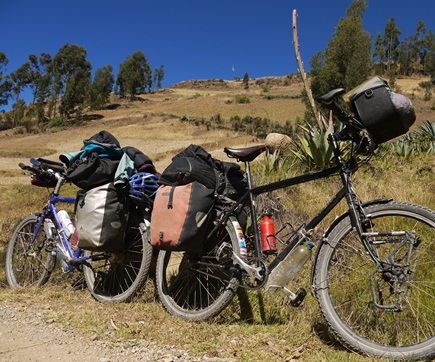
The bikes: with excess baggage stashed in Huaraz, for us this is “fast and light” mode. Or, more realistically with full camping kit and lots of warm clothes: “still slow but not quite so ridiculously heavy” mode.
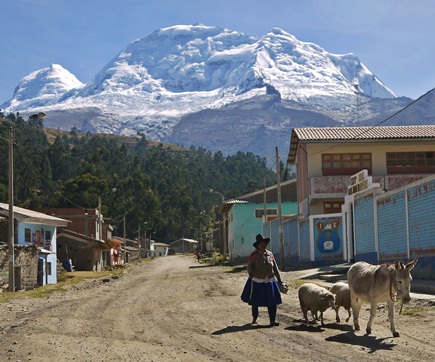
From Carhuaz, we climb up the valley towards Shilla, a small village in the foothills of the Cordillera…
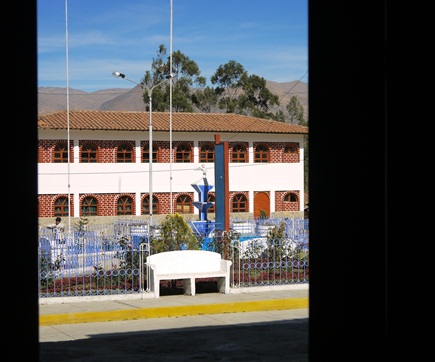
…where the immaculate square is occupied by the usual contingent of two snoozing old men and one sweeping lady…
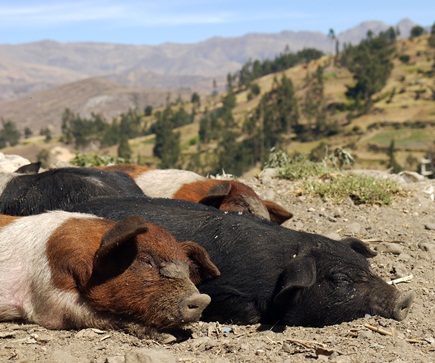
…and the roadside is lined by the local pig population. Forget the dogs – a small pig would be my pet of choice for this trip. It’s a pragmatic choice: entertainment, waste disposal and – when it gets too big for the bar bag -bacon…mmm, bacon…
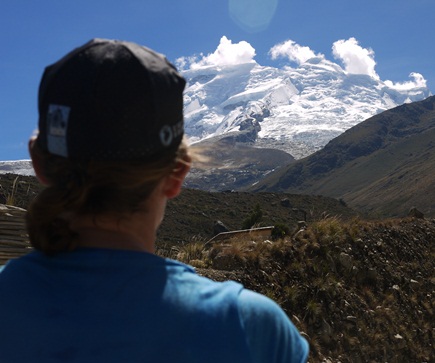
Ahead the Cordillera gets closer – here the mighty peak of Huascarán Sur, the highest in Peru at 6,768m…
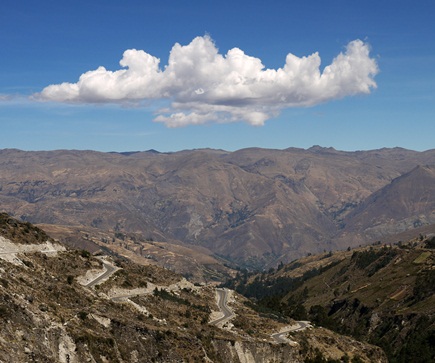
…while the less dramatic peaks of the Cordillera Negra retreat behind.
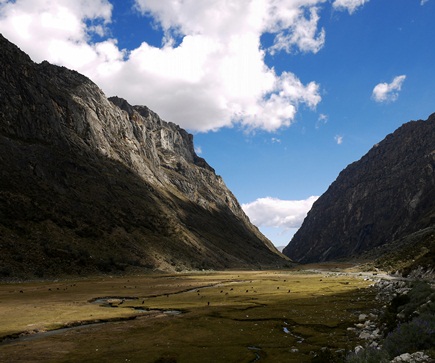
We reach the flat pampa of Quebrada Ulta as the sun dips and the shadows climb the canyon walls…
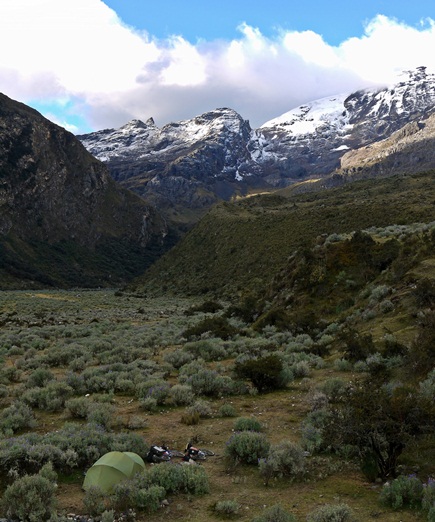
…a perfect spot to pitch for the night, with just a few inquisitive cows and the cracking noises of the glaciers high above us for company.
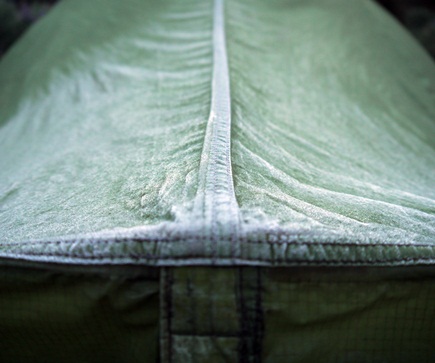
A cold night leaves a dusting of frost…
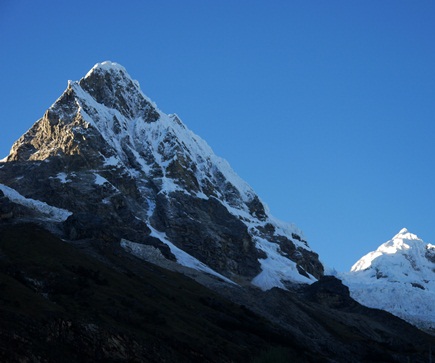
…and us shivering as we cradle our breakfast porridge and coffee. Finally, the sunlight begins to touch the surrounding peaks.
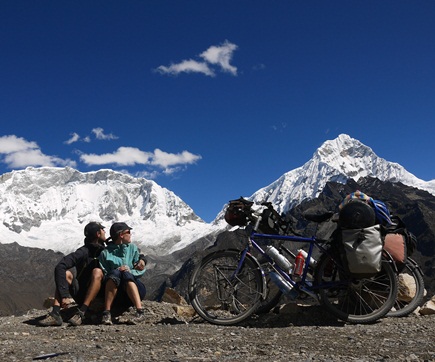
From the pampa, the switchbacks begin, and we work our way up. Salva, starting half a day behind, catches us…
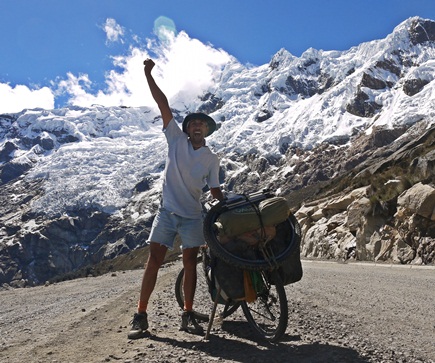
…”The best pass in the world!” he shouts triumphantly – and after seven and a half years cycling around the globe, he should know.
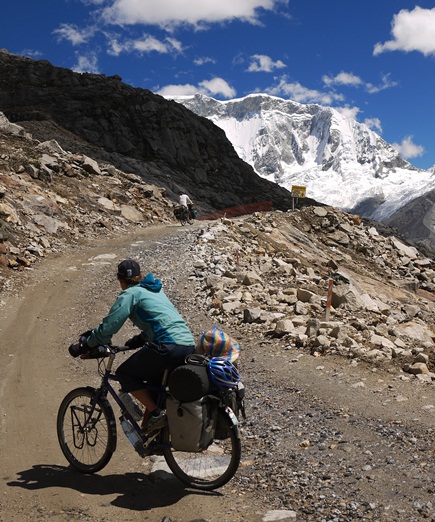
We pass the new tunnel, swapping perfect asphalt for a final few kilometres of dirt towards the pass. Breathing turns into panting…
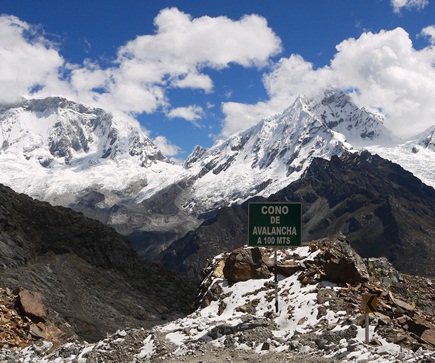
…as we reach the snowline and the glaciers close in around us…
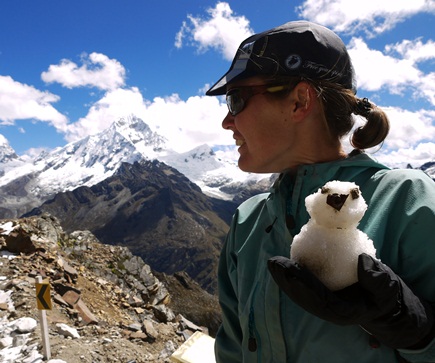
…and then we’re there! Punta Olímpica – the high point of our trip so far at 4,890m. And what would any self respecting, serious cycle tourist do to celebrate – build a snowman, of course…
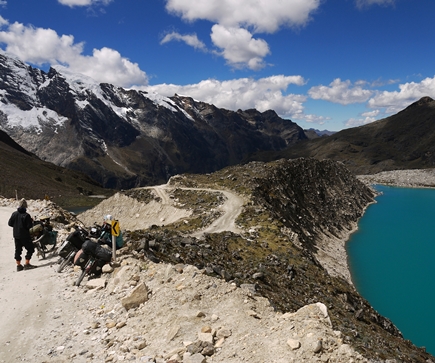
A quick stop for a bread and boiled egg lunch beside a beautiful lake…
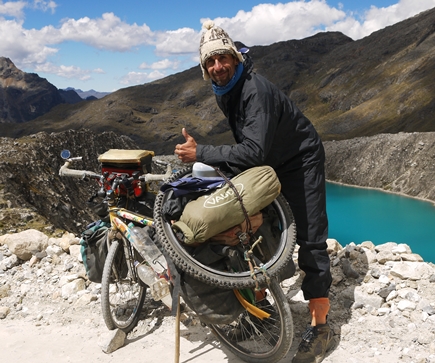
…and we pile on the layers for the descent. A thumbs up from Salva, and down we go…
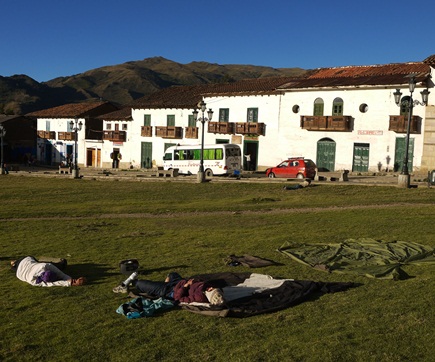
…perfect pavement all the way to Chacas. It’s a picturesque, time-stood-still Andean village with an unusual grass square – perfect for defrosting and drying still-frozen tents, and for mid-afternoon siestas.
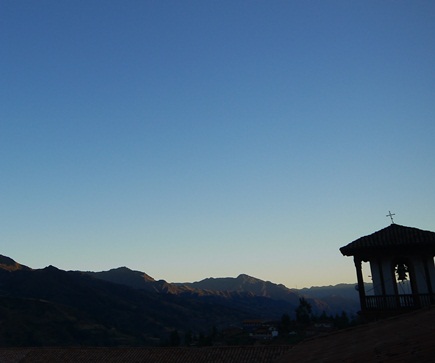
Chacas is also home to a renowned community of Italian Salesian missionaries, the Don Bosco. They work with locals to produce beautiful woodwork, and have also built a hospital which serves the whole valley. We ask to camp – and instead are treated to a bunk bed and three delicious meals – including the best pizza we’ve eaten in the last two years. Grazie mile amici!
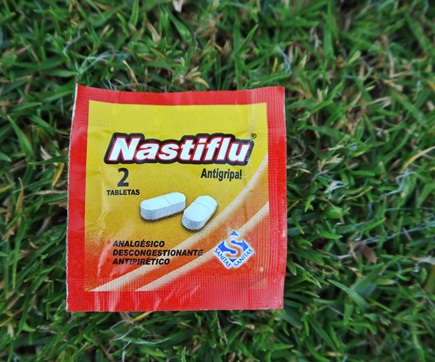
Coming from the stubborn school of sickness denial, I had hoped that some mountain air might rid me of a lingering cough and cold. Sadly not – the next day I can’t even stay upright long enough to ride around the square. And so we wave goodbye to Salva, stock up on Nastiflu…
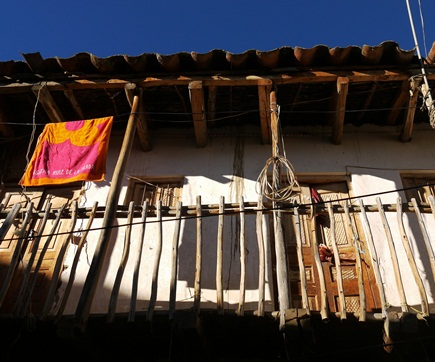
…and find ourselves a nearby hospedaje, where I retreat to bed. It’s our favourite kind of place to stay – miraculously held together by rickety pieces of wood, run by a friendly old lady who fusses around us…
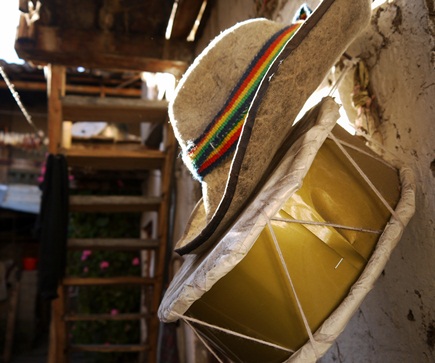
…and full of family details like her husband’s beaten old sombrero…
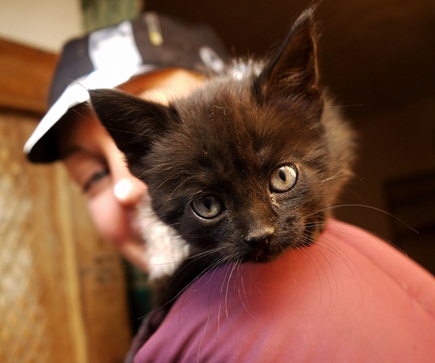
…and a resident playmate for Sarah, with an in-built homing device for a warm sleeping bag.
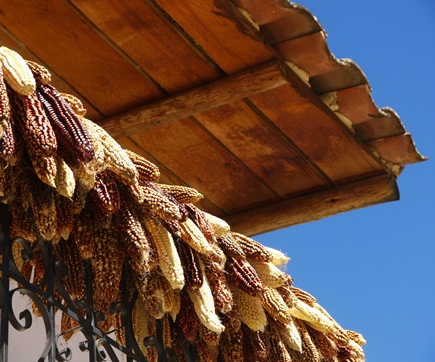
The next day I’m feeling stronger, and so we head off along the Eastern side of the Cordillera, where drying maize is hung from every roof and balcony like Christmas decorations.
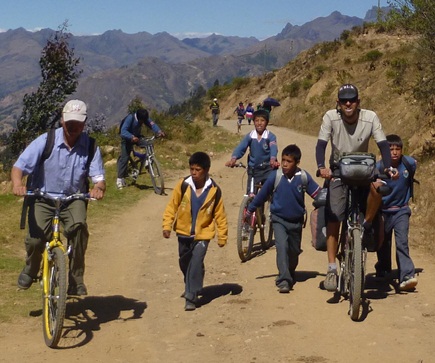
We coincide with afternoon rush hour leaving Sapchaa, and pick up an escort of schoolkids on their way home. They insist on running alongside and pushing my bike up the hills for the next 5km back to their village – if only they were on hand every day…
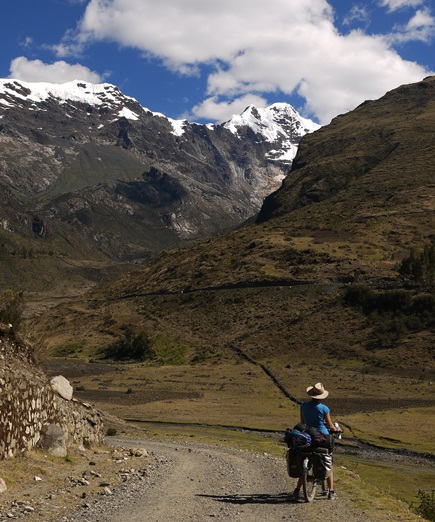
Soon we leave the dry and hot valley behind, and head back towards the snow caps once again. A late afternoon pass has us puffing…

…and then it’s downhill into Yanama, where we find a restaurant camp spot with a sunset view of the serrated ridges of the Cordillera.
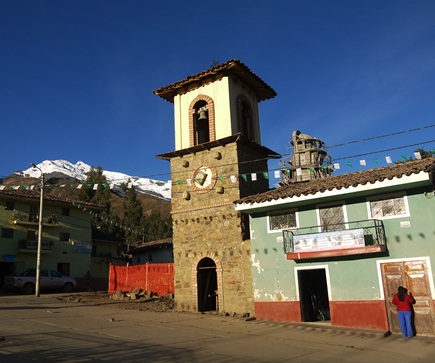
Our luck with the weather continues as the next morning dawns clear. We make an early start from Yanama…
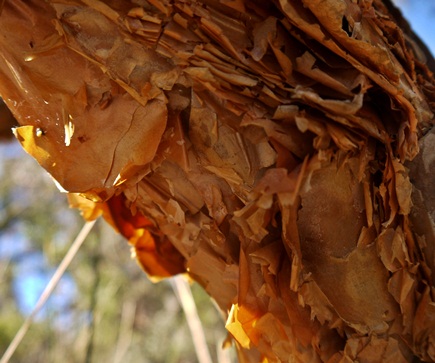
…a twisting 35km dirt climb up through the Quebrada Morococha, past stands of quenual trees with their burnt orange, flaky bark…
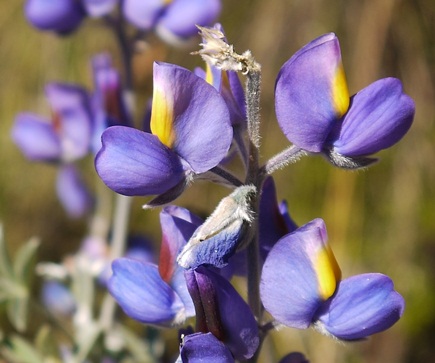
…and the delicate purples of Andean lupins.
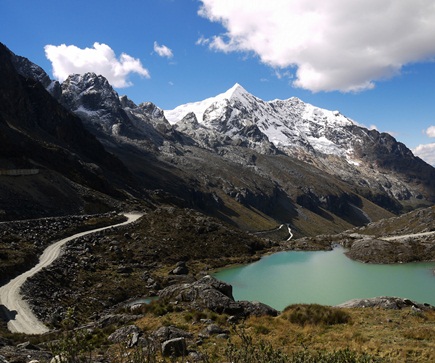
The road becomes rockier and steeper – or maybe the altitude just begins to kick in – and we pass a series of beautiful lakes…
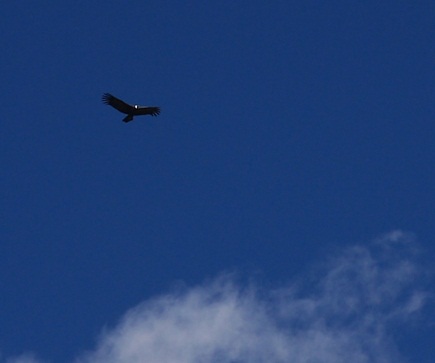
…then, in a flurry: a pair of foxes appear at the side of the road; our first Andean condor drifts effortlessly over our heads…
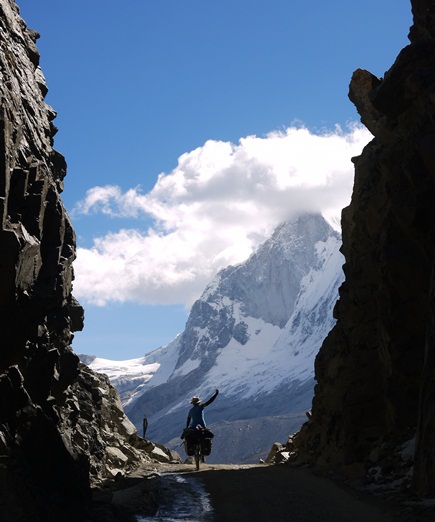
…a rock tunnel opens up before us and we crest the pass: Portachuelo de Llanganuco, 4,737m.
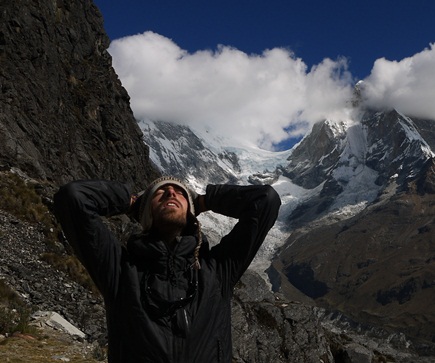
We take a breather…
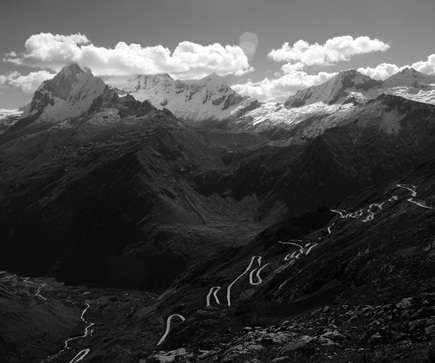
…and take in the stunning panorama spread before us.
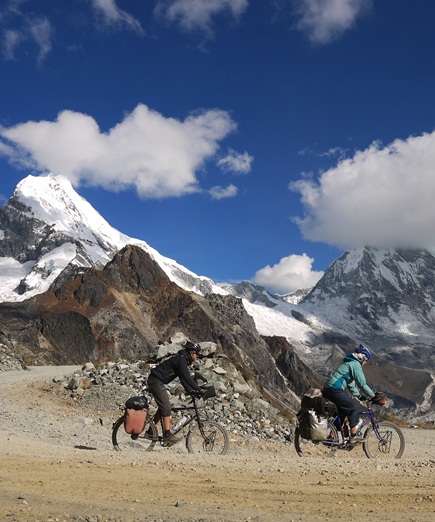
Down through the rocky hairpins we go…
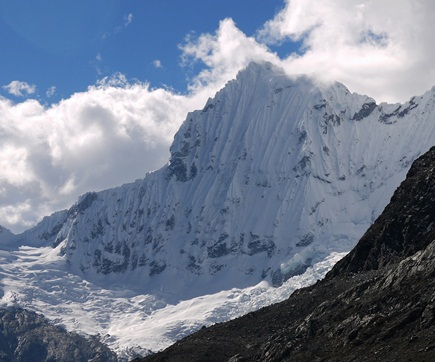
…past Chacraraju (6,108m), commanding the valley like an impenetrable, icy fortress…
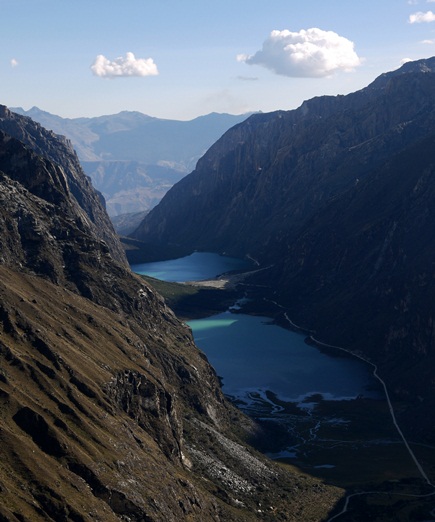
..until the Lagunas de Llanganuco lie in front of us .
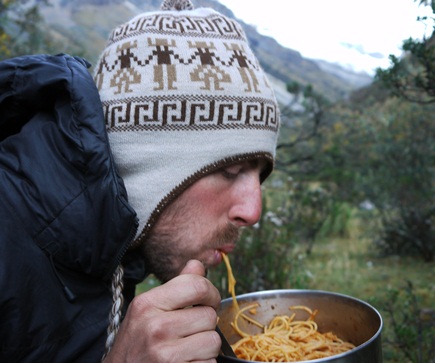
We pick a stream-side camping spot for a spaghetti-fest and an early night.

The next morning the shadows slowly fall…
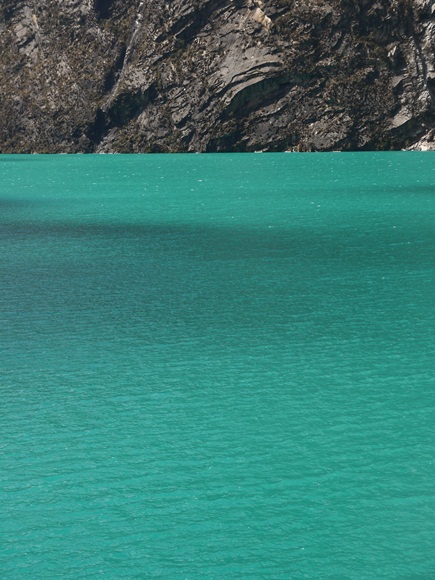
…and the sun casts its turquoise spell on Llanganuco.
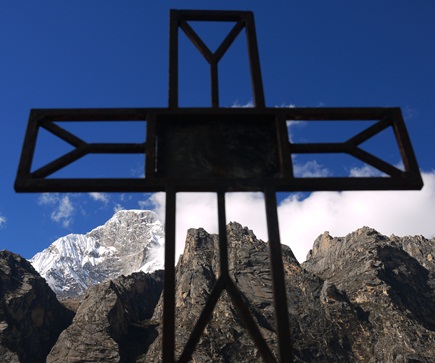
A sobering moment as we pause at the monument to the hundreds of climbers who have been killed in the Cordillera Blanca…
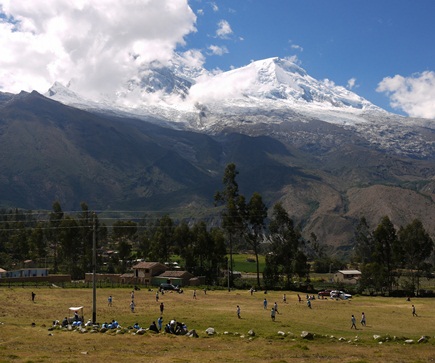
All that remains is a jarring descent towards Yungay in the Callejón de Huaylas, toes and fingers defrosting as we pass Sunday league football in the shadow of Huascarán.
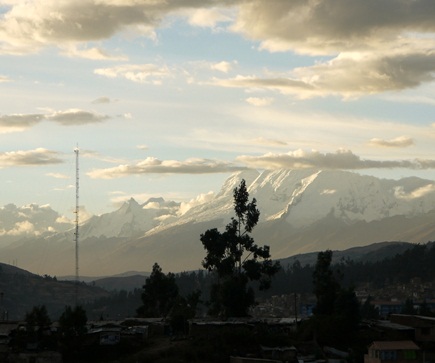
From Yungay, it’s a quick shuttle back to our comfy home-from-home in Huaraz, Santiago’s House. A hot shower and hot food awaits, along with the hypnotic view back along the Cordillera from the rooftop terrace. We’ve said “We’ll be back” about many places in this trip, but this time I think we really mean it. With some more time, a rucksack, tent, and a mountain bike, the possibilities really would be almost endless…
Rocks; very big rocks
July 31st, 2013
Whether it’s the towering peaks alongside the Pastoruri Pass outside of Huaraz or the mysterious standing stones of the Bosque de Piedras (Forest of Stones) near Cerro de Pasco, Central Peru has some impressive shows of rock.
I wouldn’t describe myself as a geology buff, but as we make we our way south through Peru, it has been impossible to ignore the swirls, textures, formations and sheer size of the Andes.
Sarah
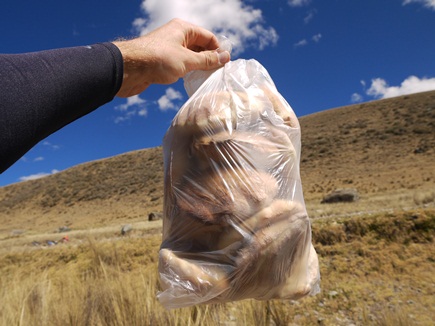
We are about to take another pass over the Cordillera Blanca and ride through remote sections for three days, so we take on-board the emergency “bread blanket”…you can never have too much bread.
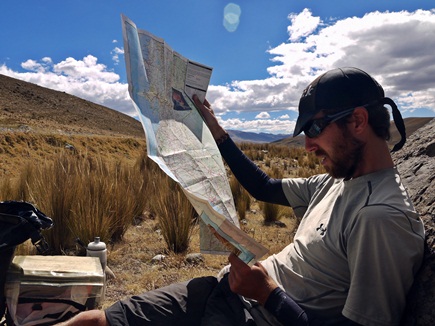
Only on the dirt road for a matter of minutes before we stop for lunch and James is found in his favourite resting pose: map gazing.
These incredible, enormous plants – also known as Queen of the Andes – only grow here and in Bolivia, between 3200 and 4800m.

…and keep climbing, where the craggy faces get craggier and the serious weather happens – it is snowing here.
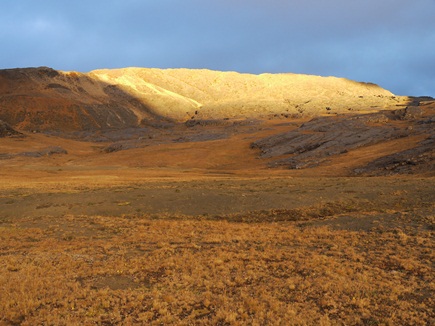
…and another campsite where the curves of the ground are bathed in the last of the day’s golden sunlight.
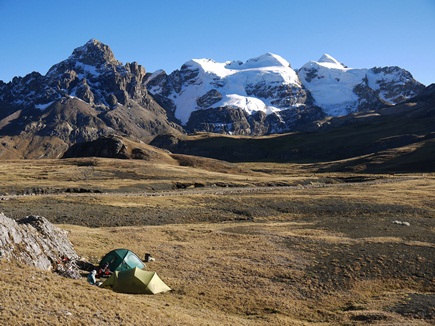
It’s always a battle between enjoyment and endurance for me at this altitude: camping alongside jaw dropping landscapes is incredible…
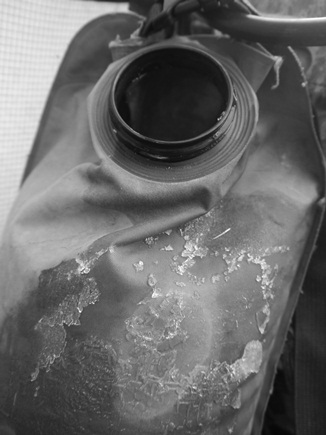
…but you have to cope with seriously cold temperatures at nearly 5000m. The ice on our water bags freezes overnight inside in our tent…
…and, when we happen to ask, as always up in the mountains the hospitality is free flowing. We meet Lydia who quickly presents us with a bowl of the finished product: delicious cancha (toasted, salted corn) and two sweet mandarins to give us energy to finish the climb towards Huánuco.
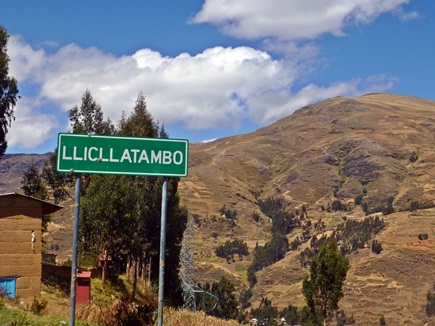
On the way, I practice my Spanish/Quechua tongue-twisters trying to pronounce local village names – although this one looks Welsh to me.
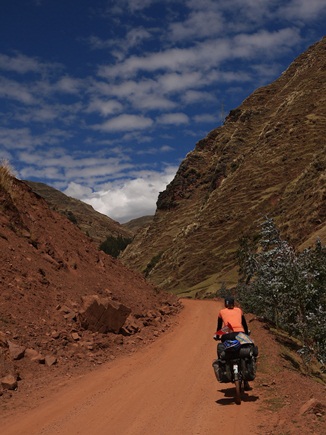
Our back-road ride from Huánuco to Cerro de Pasco via Pallanchacra had its moments. Some very pretty…
…like stopping to admire llama’s pom poms (each farmer identifies their flock with different ear finery – tassels, pom poms, ribbons and bows)…
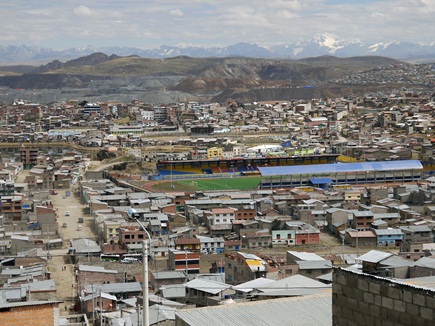
Others were downright nasty. At 4380m, Cerro de Pasco lays claim to being the “highest city in the world” and with a whacking great mine in the middle of it, it can also claim to be “one of the ugliest”…
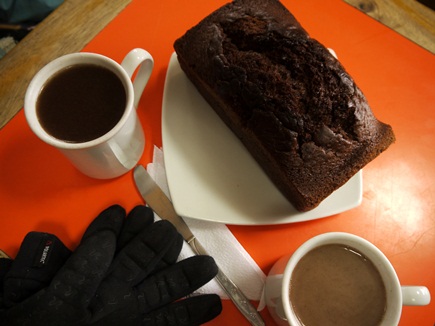
…and “one of the coldest”. The only sensible way to warm up here: hot chocolate and a big slab of chocolate cake. James fulfills a long held desire in Cerro de Pasco: to buy an entire cake and eat it all. Mission accomplished.
We’re happy to leave Cerro de Pasco behind and explore the Bosque de Piedras at the nearby Santuario Nacional de Huayllay.
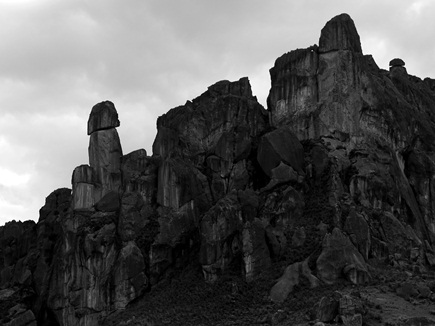
…and of course the most fun is identifying obvious formations that never quite made it into the official tour brochure.
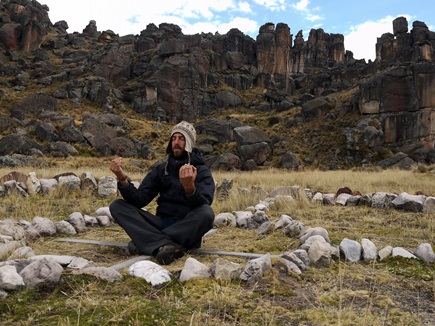
At the end of our walk, in the mysterious “magnetic” stone circle, James puts into practice some of the meditation techniques taught at Rhiannon; although I could have sworn he was thinking about that chocolate cake again…
